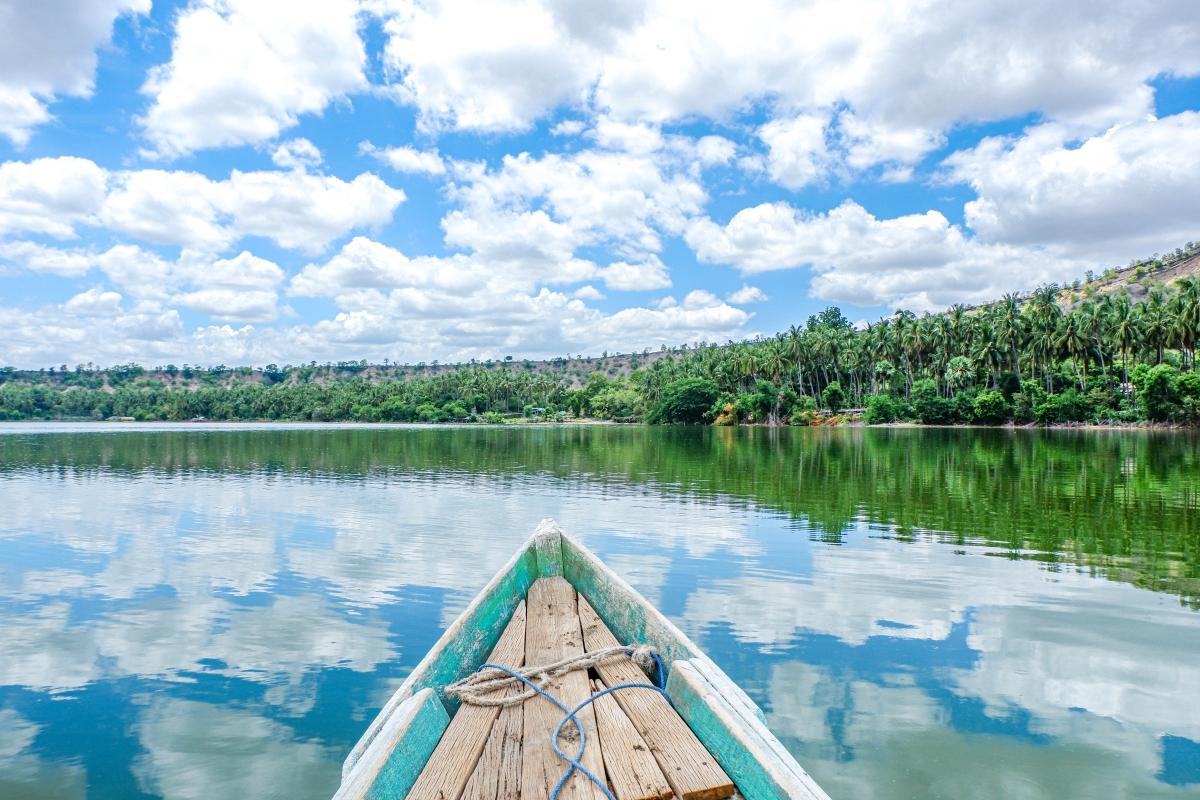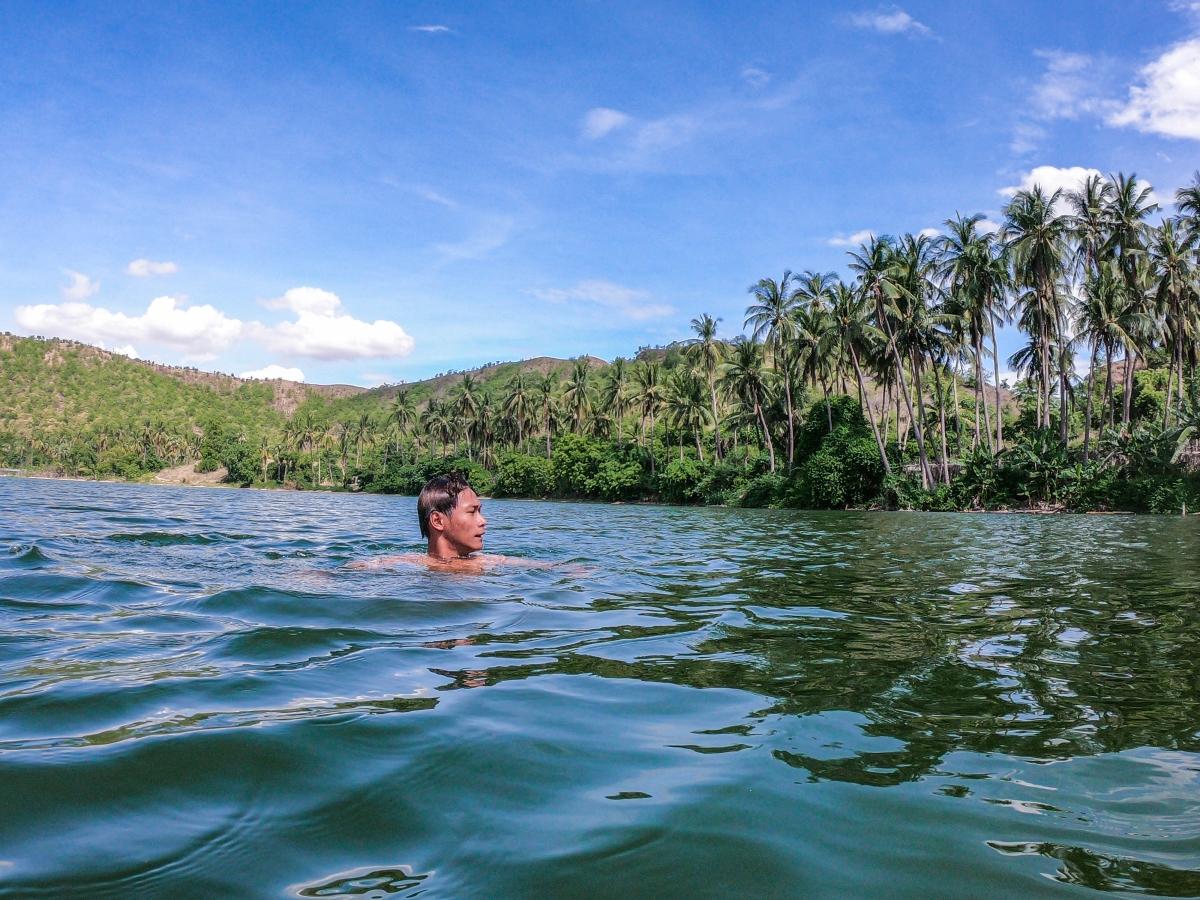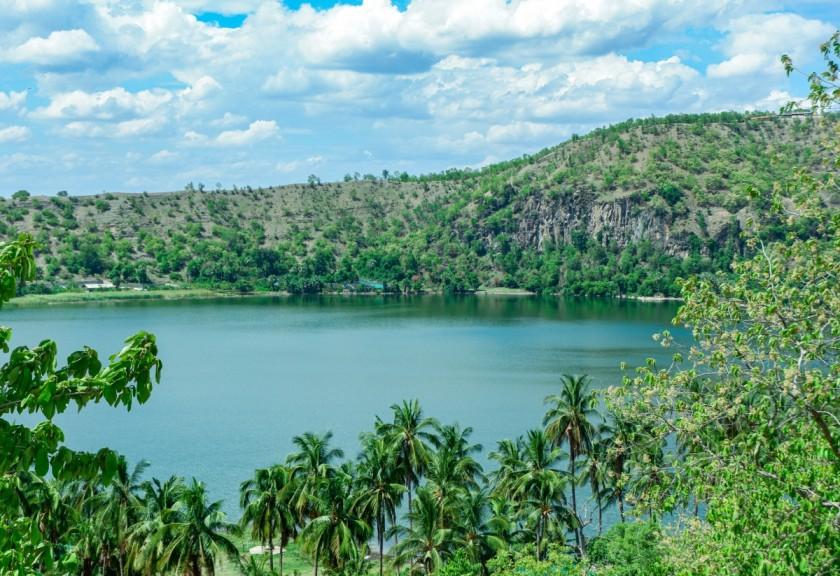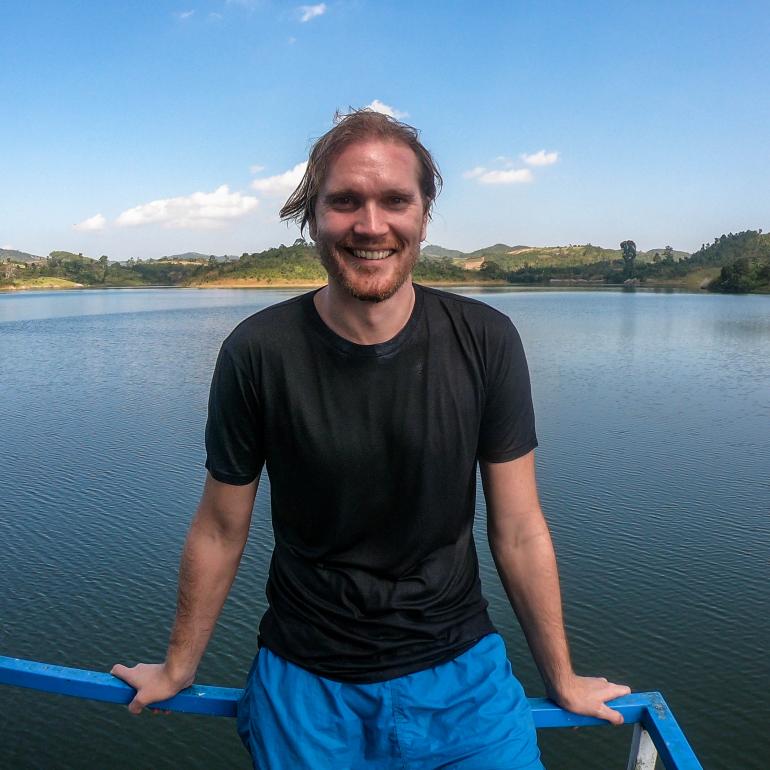
On the other side of the Covid-19 crisis, the world will want to forget the word ‘quarantine’ and embrace the magic of travel once more.
Those itching for a Myanmar adventure should immediately head northwest of Mandalay to the Sagaing city of Monywa.
Set on the banks of the Chindwin River, most visitors come for the enormous reclining Buddha statues and various religious sites that pepper the surrounding countryside.
But just around the corner is a series of lakes set within the craters of long-dormant volcanoes.
On day one we set off north for Twin Taung—the largest of the three. We wound our way round the mountain before scaling a steep stone staircase to a monastery (22.370053, 95.029635) overlooking the waters.
The monks at the monastery explained that the lake was used to harvest a type of blue-green algae called spirulina, which was then processed into beauty products for a French cosmetics company (they didn’t know the brand).
The next day we crossed the Chindwin for the two remaining crater lakes: Twin Ywar and Twin Pyauk. Off the main highway the asphalt gave way to a rocky pothole-marked trail, and the villages we passed—aside from the glistening gold of the pagodas—were ragged, ramshackle, and very poor.
Eventually we turned onto a narrow path that circumvented the crater’s edge, which, in turn, led down to the shore of Twin Ywar (22.279958,94.976433).
There we found a couple of small teashops with some plastic tables and chairs (which, judging from the size, looked as if they’d been pinched from a kindergarten), with rainbow-striped umbrellas planted between them.
After chugging back a couple of lukewarm beers, we charged headfirst into the lake. To our great surprise, we discovered that the water was a salty as any ocean.
After lunch we hired a boat to take us round the lake, occasionally stopping to leap into the water and to snap photographs of life on the bank: makeshift bamboo fishing huts, local kids splashing around in the shallows, and the mesmerising golden light of the stupas, half-buried in the palms, winking in the afternoon sun.
That just left the final crater—Twin Pyauk (22.300052,94.980096)—a bumpy 20-minute ride to the north.
When we arrived at the shore a young boy was pumping water from a well. Once over the initial shock of our arrival, he joined us for a swim. The water was fresh, clear, and cold, and as we waded in schools of fish darted away beneath the surface.
Afterwards the young man led us back to the well to pump water for a bucket shower. By now a group of villagers had congregated by the shore—no doubt to take in the spectacle of a blonde 6’3 foreigner swimming in their volcano and washing in their well.
One of the locals warned us that once the sun started to set, a family of Burmese pythons would slither into view from the jungle and take over the shallows. Some of the pythons were intimidatingly large and the locals tended to give them a wide berth. I was very grateful to learn this local titbit post swim.
Nearest city: Monywa.
How to get there: Expect to pay 50,000 to 60,000 kyats for a private car. I did not have first-hand experience with motorbike rental in Monywa, but, as with most places in Myanmar, ask around and someone should eventually help.
Twin Taung is about an hour north of Monywa. The other two craters are about 90 minutes away and can be reached via a bridge crossing over the Chindwin River.
Where to stay: Shwe Taung Tan Hotel – Lake View in Monywa has good prices and a swimming pool.
When to go: All year round, though, naturally, the water levels rise considerably during monsoon.




